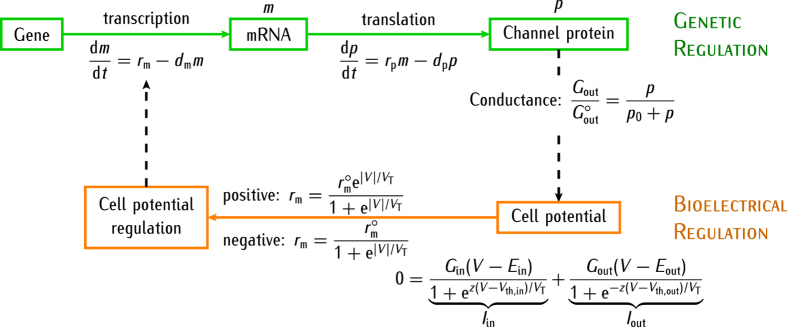Figure 1. Scheme illustrating the positive and negative feedback scenarios between the genetic and bioelectrical descriptions at the single-cell level.
The model equations for the time (t)-dependent coupling between the genetic and bioelectric regulations are also shown. The dashed arrows show the feedback mechanism between the potential-dependent production of the protein forming the outward-rectifying ion channel and the cell potential modulation due to this channel conductance. The transcription (rm) and translation (rp) rate constants together with their corresponding degradation rate constants dm and dp lead to the steady-state mRNA and protein concentrations m = rm/dm and p = rpm/dp = rprm/(dpdm), respectively. For the sake of simplicity, the translation rate constant rp and the degradation rate constants dmand dp are assumed to be independent of the potential38,39,40. On the contrary, the transcription rate rm(V) depends on the cell potential V and can be increased (positive regulation) or decreased (negative regulation) with respect to the zero-voltage value  according to the absolute value |V|. The potential V is determined by the equation of zero total current through the membrane29, Iin + Iout = 0, where Iin and Iout are the electrical currents through the inward- and outward-rectifying channels19, respectively. The channel equilibrium potentials are fixed to Eout = 0 mV and Ein = −60 mV and the threshold potentials are Vth,in = Vth,out = −27 mV. The number of effective charges involved in gating29 is assumed to be z = 3 and the thermal potential is VT = RT/F = 27 mV at 310 K, where R is the gas constant, T is the temperature, and F is the Faraday constant.
according to the absolute value |V|. The potential V is determined by the equation of zero total current through the membrane29, Iin + Iout = 0, where Iin and Iout are the electrical currents through the inward- and outward-rectifying channels19, respectively. The channel equilibrium potentials are fixed to Eout = 0 mV and Ein = −60 mV and the threshold potentials are Vth,in = Vth,out = −27 mV. The number of effective charges involved in gating29 is assumed to be z = 3 and the thermal potential is VT = RT/F = 27 mV at 310 K, where R is the gas constant, T is the temperature, and F is the Faraday constant.

